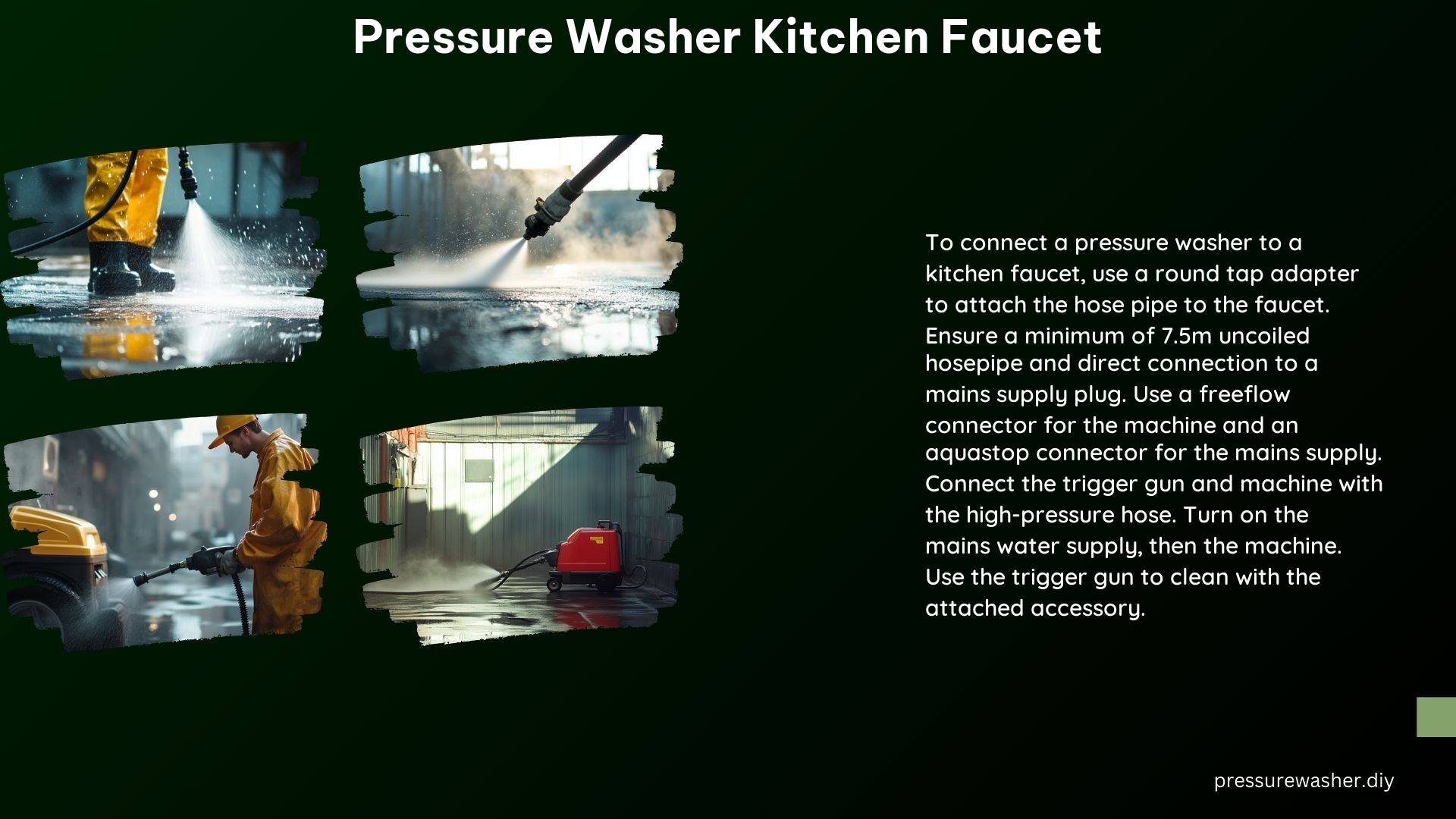Connecting a pressure washer to your kitchen faucet can be a convenient and cost-effective solution for various cleaning tasks, but it requires careful consideration to ensure the safety and efficiency of the setup. This comprehensive guide will walk you through the necessary steps, technical specifications, and potential challenges to help you successfully integrate a pressure washer with your kitchen faucet.
Can I Connect a Pressure Washer to My Kitchen Faucet Without Damaging It?
Yes, you can connect a pressure washer to your kitchen faucet without causing any damage, provided you use the correct adapters and follow the proper setup procedures. Here’s what you need to know:
-
Tap Adapter: The key component is a tap adapter that screws directly onto the end of your faucet. This adapter should have threads that are compatible with a standard garden hose. You can find these adapters at most hardware stores or online retailers.
-
Hose Pipe and Adapters: Attach a short piece of hose pipe to the tap adapter, and then connect the pressure washer hose to the other end of the hose pipe. Ensure that all the adapters are securely attached to prevent any leaks.
-
Water Pressure Compatibility: Verify that your kitchen faucet can supply enough water pressure to the pressure washer. Typically, a pressure washer requires a minimum of 7.5 meters (24.6 feet) of uncoiled hose and a mains supply plug capable of carrying 10 amps.
Will a Pressure Washer Work Efficiently with the Water Supply from My Kitchen Faucet?

The efficiency of the pressure washer when connected to your kitchen faucet depends on several factors:
-
Water Pressure: If your kitchen faucet can provide sufficient water pressure, the pressure washer will work efficiently. As mentioned earlier, a pressure washer typically requires a minimum of 7.5 meters (24.6 feet) of uncoiled hose and a mains supply plug capable of carrying 10 amps.
-
Flow Rate: The flow rate of your kitchen faucet also affects the efficiency of the pressure washer. A higher flow rate will result in better performance. Ideally, your kitchen faucet should have a flow rate of at least 8 liters (2.1 gallons) per minute.
-
Hose Length and Diameter: The length and diameter of the hose connecting the faucet to the pressure washer can impact the efficiency. A longer hose with a smaller diameter can reduce the water pressure and flow rate, affecting the pressure washer’s performance.
Do I Need an Adapter to Connect a Pressure Washer to My Kitchen Faucet?
Yes, you will need several adapters to connect a pressure washer to your kitchen faucet:
-
Tap Adapter: This adapter screws directly onto the faucet and has threads for a garden hose connection.
-
Hose Pipe Adapters: These adapters are used to connect the hose pipe to the tap adapter and the pressure washer hose.
-
Freeflow Connector: This connector is used to attach the hose to the pressure washer and ensure a secure, leak-free connection.
Technical Specifications of Pressure Washer Kitchen Faucet
When connecting a pressure washer to your kitchen faucet, consider the following technical specifications:
-
Water Pressure: As mentioned earlier, a pressure washer typically requires a minimum of 7.5 meters (24.6 feet) of uncoiled hose and a mains supply plug capable of carrying 10 amps.
-
Flow Rate: The flow rate of your kitchen faucet should be at least 8 liters (2.1 gallons) per minute to ensure efficient performance of the pressure washer.
-
Hose Length and Diameter: The length and diameter of the hose connecting the faucet to the pressure washer can impact the efficiency. Ideally, use a hose with a minimum length of 7.5 meters (24.6 feet) and a diameter of at least 12.7 millimeters (0.5 inches).
DIY Setup
To set up your pressure washer with your kitchen faucet, follow these steps:
- Attach the tap adapter to the faucet, ensuring a secure and leak-free connection.
- Connect the hose pipe to the tap adapter.
- Attach the pressure washer hose to the other end of the hose pipe.
- Verify that all connections are tight and secure to prevent any leaks.
- Turn on the water supply and check for any leaks.
- Turn on the pressure washer and test its performance.
Remember to always follow the manufacturer’s instructions for your specific pressure washer model and ensure that the water pressure and flow rate from your kitchen faucet are compatible with the pressure washer’s requirements.
